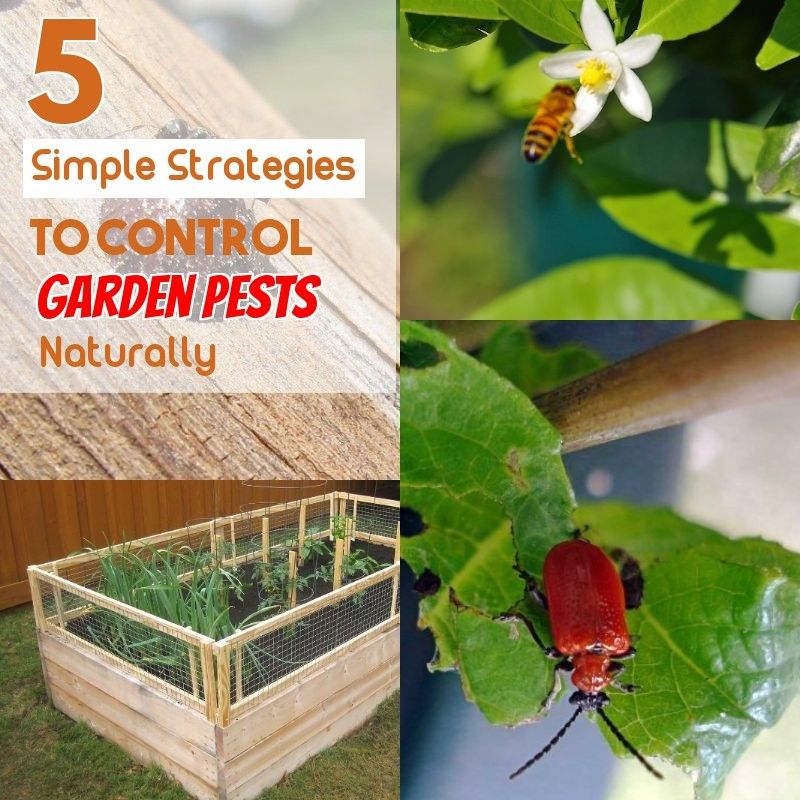Natural Pest Control Methods in the Garden
Maintaining a thriving and healthy garden can be a challenging task, especially when pests decide to make it their home. Many gardeners are hesitant to use chemical pesticides due to concerns about potential harm to the environment, beneficial insects, and even themselves. Fortunately, there are numerous natural pest control methods that can effectively manage pests while keeping your garden safe and eco-friendly. In this article, we will explore some of these methods and discuss how they can be implemented in your own garden.
1. Companion Planting
Companion planting is an age-old technique that involves planting certain combinations of plants together to benefit each other. Some plants naturally repel pests with their strong fragrance or by emitting chemicals that deter insects. For example, marigolds emit a scent that repels aphids and nematodes, making them excellent companions for vegetables such as tomatoes or peppers.
Other examples of companion plants include:
– Nasturtiums: These vibrant flowers act as a magnet for aphids and whiteflies, luring them away from more vulnerable crops.
– Basil: Not only does basil enhance the flavor of tomatoes when planted nearby but it also repels mosquitoes and flies.
– Chives: Their pungent smell deters Japanese beetles from attacking roses.
By strategically incorporating these companion plants into your garden layout, you can create an environment that naturally discourages many common pests.
2. Beneficial Insects
Encouraging beneficial insects is another effective method of natural pest control. Ladybugs feed on aphids while lacewings prey on various soft-bodied insect pests like mealybugs and scale insects. To attract these helpful creatures to your garden, provide them with shelter by incorporating bug houses or simply leaving small patches of undisturbed vegetation.
Another way to attract beneficial insects is by planting nectar-rich flowers such as yarrow or lavender near your vegetable beds or fruit trees. These flowers not only provide a food source but also act as a habitat for beneficial insects like hoverflies and parasitic wasps, which help control pests such as aphids and caterpillars.
3. Physical Barriers
Creating physical barriers is an effective way to protect your plants from crawling pests. For example, placing copper tape around pots or raised beds can prevent slugs and snails from reaching your crops. Additionally, constructing chicken wire fences or using row covers can keep larger pests such as rabbits or deer away from your garden.
Consider building simple frames covered with lightweight fabric to protect vulnerable seedlings from flying insects like cabbage moths or carrot flies. These barriers allow sunlight, water, and air to pass through while preventing the entry of unwanted pests.
4. Homemade Pest Sprays
There are various homemade sprays that can be used to deter common garden pests without harming beneficial insects or pollinators. Here are two examples:
– Neem oil spray: Derived from the neem tree, this organic pesticide disrupts the feeding and breeding patterns of many pest insects including aphids, whiteflies, and leafhoppers.
To make a neem oil spray, mix one teaspoon of pure neem oil with one quart of warm water and a few drops of dish soap (to help emulsify the oil). Shake well before use.
Apply the spray in the early morning or late evening when bees are less active.
– Garlic spray: A garlic-based insecticide repels soft-bodied insects such as aphids, thrips, and spider mites.
To make garlic spray at home, blend several cloves of garlic with water until smooth. Strain out any solids using cheesecloth or a fine-mesh sieve. Dilute the resulting liquid by mixing one part garlic mixture with ten parts water.
Spray directly on affected plants every few days until pest populations decrease.
Remember always to test any homemade sprays on a small portion of your plants before applying them broadly to ensure they do not cause any damage.
5. Crop Rotation
Crop rotation is a time-tested method that helps prevent the build-up of pests and diseases in the soil. Different plant families have varying pest susceptibility, so rotating crops from one family to another can disrupt pest life cycles and reduce their impact.
For instance, if you grew tomatoes in a specific bed this year, it is advisable to plant a different family next season, such as beans or cucumbers. This practice reduces the likelihood of pests or diseases affecting your new crop because many pests are host-specific and cannot survive without their preferred crop nearby.
6. Organic Mulching
Mulching provides numerous benefits for your garden, including weed suppression and moisture retention. However, certain types of mulch can also deter pests naturally. For example:
– Cedar chips: These repel ants, slugs, snails, and some species of beetles.
– Pine needles: They discourage slugs and snails due to their sharp texture.
– Straw or hay: A thick layer around vulnerable plants acts as a barrier against crawling insects like cutworms.
Additionally, organic mulches break down over time into nutrient-rich compost that improves soil structure and fertility.
In conclusion, embracing natural pest control methods not only ensures a healthy garden but also promotes biodiversity by protecting beneficial insects. By implementing techniques such as companion planting, attracting beneficial insects with nectar-rich flowers or bug houses, creating physical barriers where necessary, using homemade sprays judiciously if required,
rotating crops annually,and opting for organic mulches; you will be on your way to managing pests effectively while maintaining an eco-friendly garden environment. Remember that patience is key when adopting these methods since it may take some time for natural balance to occur within your garden ecosystem.


Leave a comment